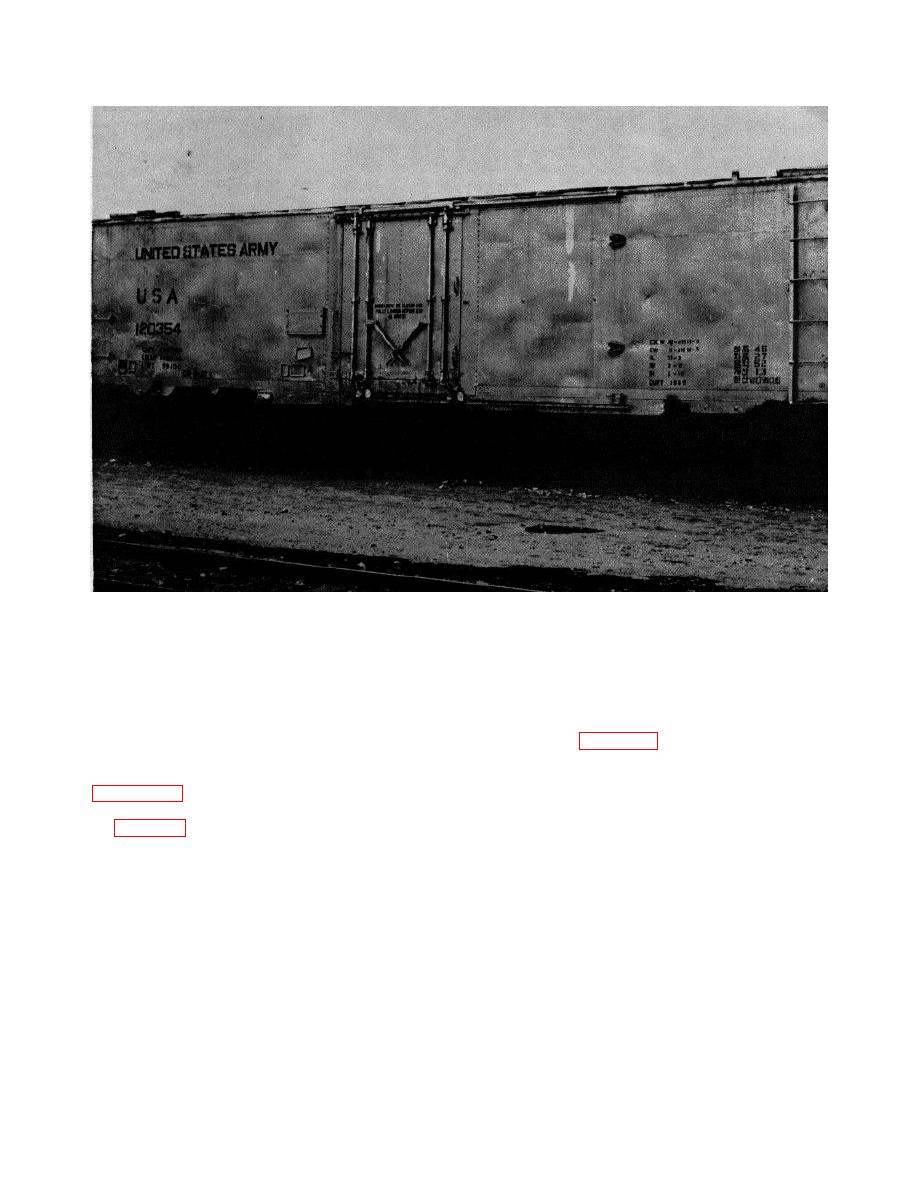
TM 55-203
Figure 2-1. Railway car (ice), Refrigerator, 56 -inch gage, 50-ton, 8-wheel,
foreign service.
constitute more than 90 percent of open-top types, will
2-4. House Cars
be considered exclusively. All-steel gondola and hopper
cars are of diverse types. Some consist of fixed sides,
a.
General. A house car is a car with an
ends and bottoms. A 40-ton, high-side gondola is
enclosed superstructure which has sides, ends, and a
illustrated in figure 2-4. Other types have drop sides
roof, and which is provided with doors, vents, ladders,
and/ or drop bottoms or, in the case of the hoppers, drop
and running boards.
A house car is built on a
doors. The design of side and end framing has given
conventional underframe and has conventional running
the gondola and hopper car high load capacities, safety,
gear. Figures 2-1 and 2-2 illustrate the exterior of
and durability. The components of these cars, except
foreign service refrigerator cars. An interior view is
for superstructure and an underframe designed for
shown in figure 2-3.
heavy loads, are almost identical with those of other
cars of equivalent load limits. Drawings showing the
b.
Usage. In oversea service, only three types
gondola underframe design load capacity are available
of house cars will be used: boxcars, refrigerator cars,
from the US Army Mobility Equipment Command, St.
and caboose or guard cars. The major characteristics of
Louis, Missouri 63120.
these types will be discussed, and only limited coverage
will be given to miscellaneous types.
b.
Usage. Drop ends are an asset when it is
necessary to load long material or when the car is used
2-5. Open-Top Cars
to transport machinery that extends beyond the end
limits of the car. In gondola cars with drop ends, the
a.
General. Open-top cars include gondola,
entire end swings inward and
hopper, and ballast cars, but not flatcars. For the
purpose of this manual, gondola and hopper cars, which
2-2



 Previous Page
Previous Page
